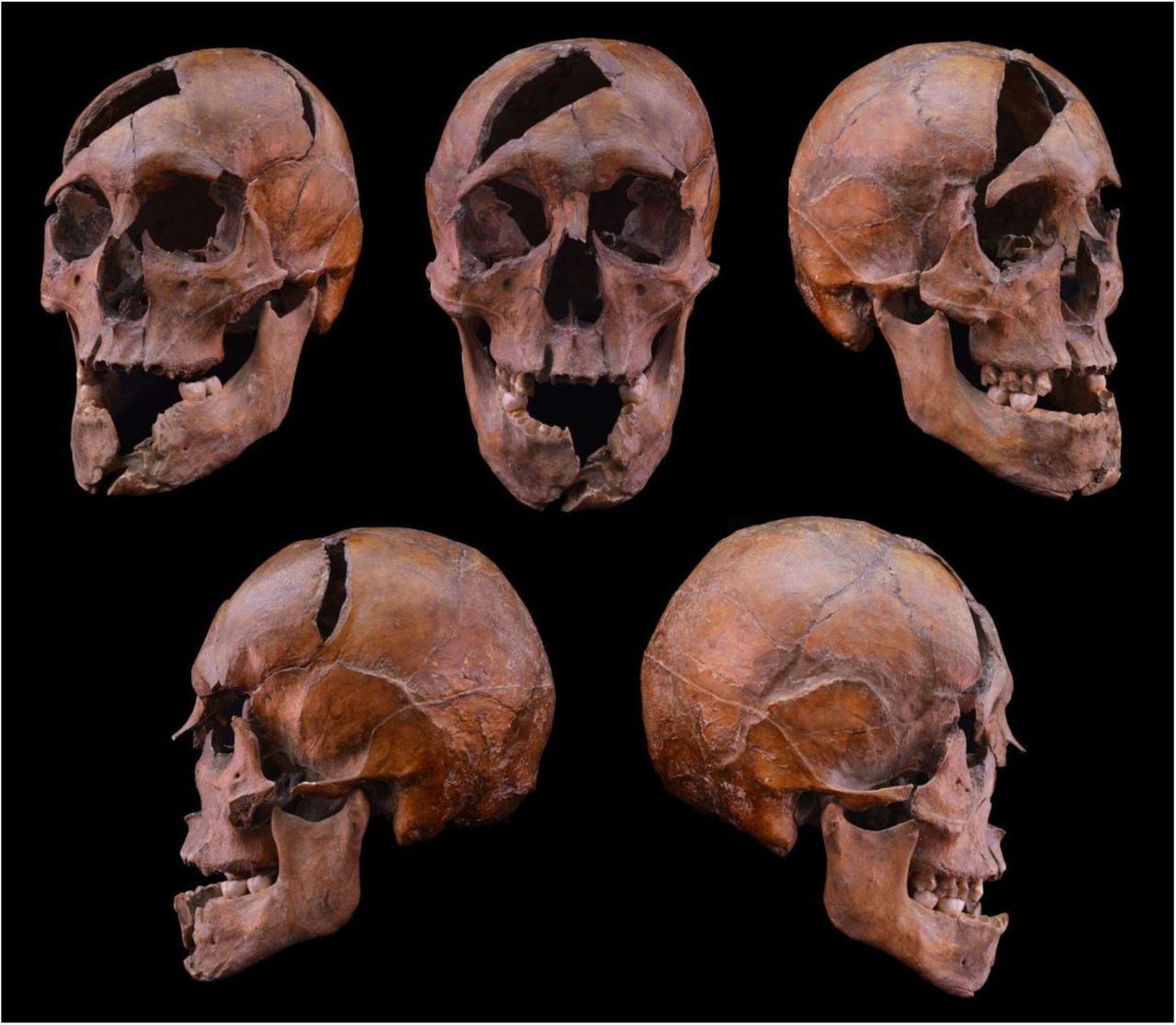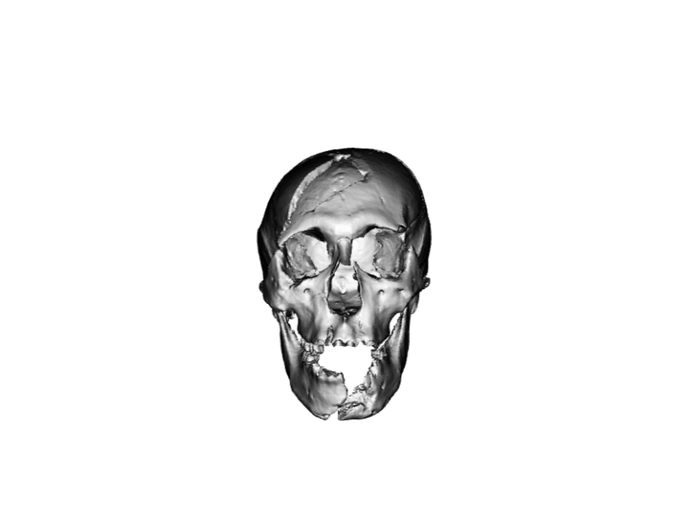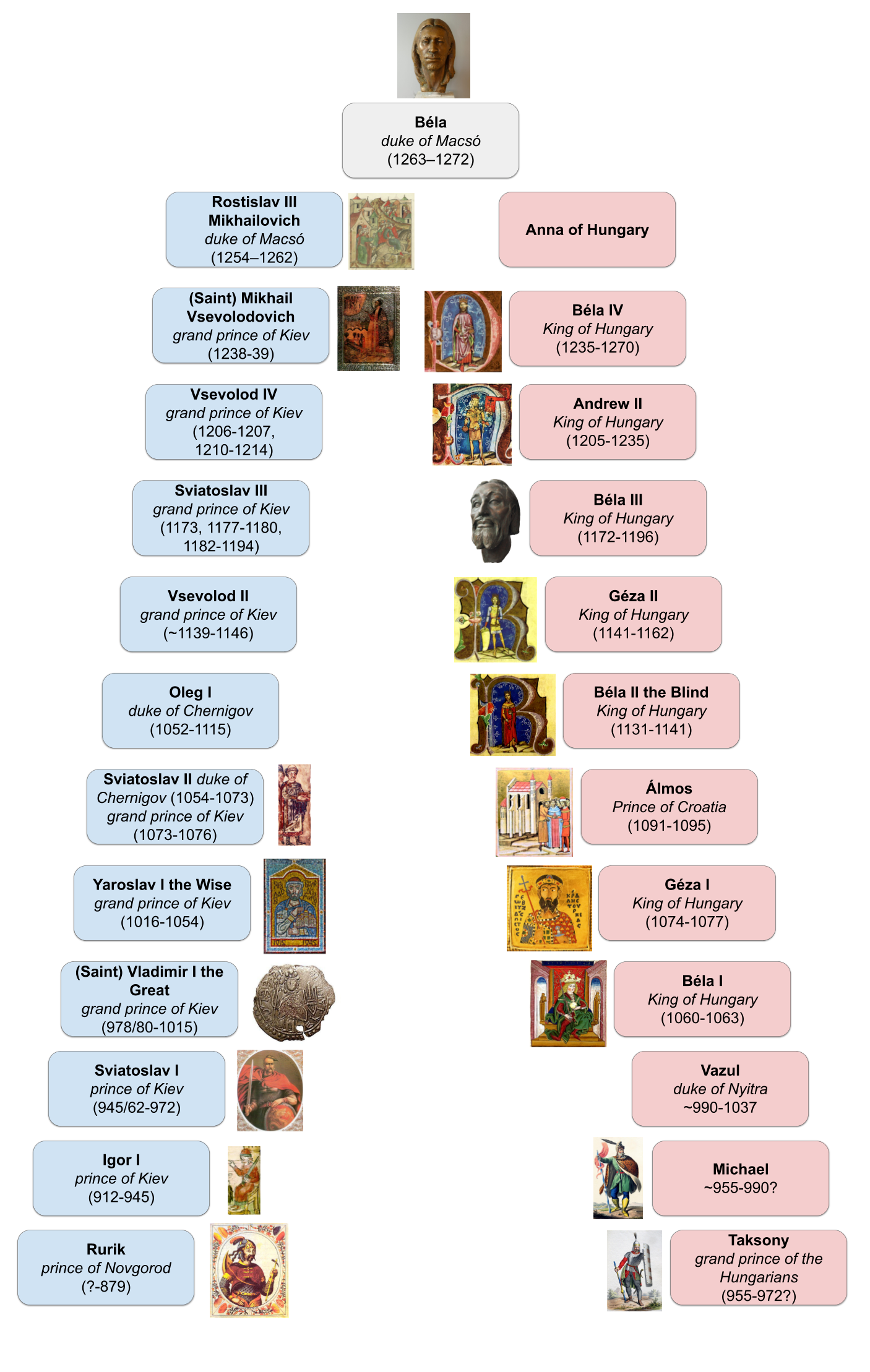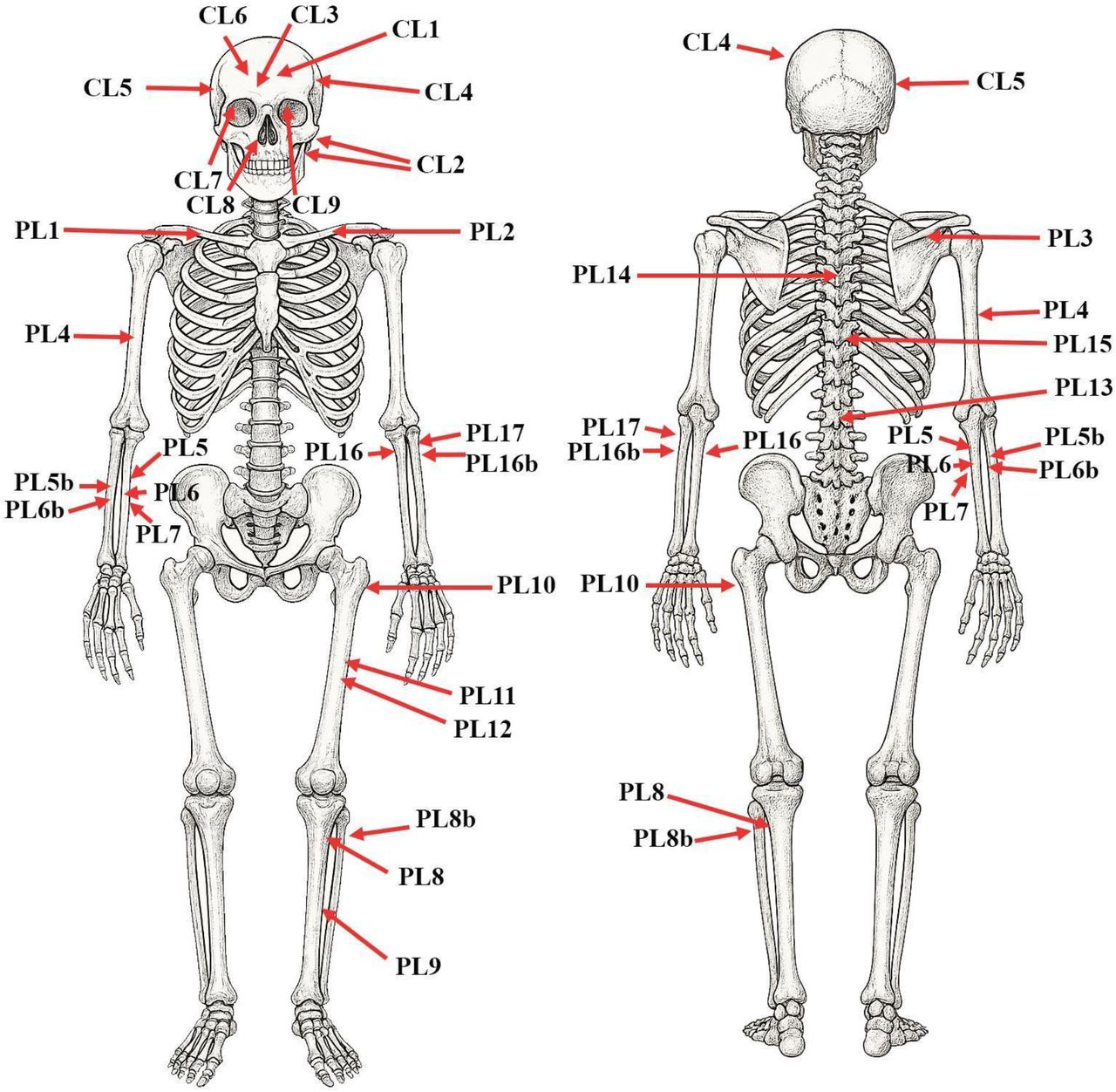An international project led by Hungarian researchers has successfully identified the remains of Duke Béla, the Ban of Macsó, a member of the Árpád and Rurik dynasties. During the research coordinated by Tamás Hajdu (Department of Anthropology, Faculty of Sciences, Eötvös Loránd University (ELTE TTK)), Anna Szécsényi-Nagy and Noémi Borbély from the Institute of Archaeogenomics, ELTE RCH were responsible for the genetic analyses. The investigations have answered a century-old archaeological question. The results clearly illustrate how effectively historical data can be verified and past violent deaths can be reconstructed in unprecedented detail through the cooperation of the humanities and the natural sciences. The new study has been published in the prestigious forensic journal Forensic Science International: Genetics.
In 1915, during an archaeological excavation on Margaret Island (Budapest), the osteological remains of a young man were discovered in the sacristy of the Dominican monastery. Based on the find-circumstances, historical data, the place of the burial, and signs of traumatic injuries on the bones, it was assumed that the remains belonged to a duke of the House of Árpád, Béla Duke of Macsó. Béla of Macsó (born after 1243 – died: November 1272) was the grandson of Hungarian King Béla IV on his mother’s side, and on his father’s side belonged to the Rurik dynasty of northern, Scandinavian origin, which had produced many Grand Dukes of Kiev over seven centuries from the 9th century onwards. According to 13th-century Austrian chronicles, Ban Henrik "Kőszegi" of the Héder family and his companions assassinated Duke Béla of Macsó in November 1272. According to contemporary sources, the severely mutilated remains of Béla of Macsó were collected by Margit (Béla's sister) and Erzsébet (Béla's niece) and buried in the Dominican monastery on the island.
 The skull of the investigated individual from the 13th century Dominican monastery on Margaret Island, Budapest.
The skull of the investigated individual from the 13th century Dominican monastery on Margaret Island, Budapest.
Following the excavation, the remains were sent to Lajos Bartucz at the Institute of Anthropology of the Budapest University (now: Department of Anthropology, ELTE TTK), for bioanthropological analysis. Bartucz identified 23 sword cuts on the man's skeleton and several fatal injuries on the skull. According to Bartucz, the duke did not die in a duel, but was attacked by several people at once, from several sides, and was even attacked while lying on the ground. Bartucz mentioned the bones in a newspaper article in 1936 and then published a photograph of the skull in his book in 1938, after which no news about the bones was published until 2018. Anthropologists believed that the remains may have been lost during the Second World War. In 2018, however, the postcranial bones were discovered by chance in a wooden box in the anthropological collection of tens of thousands of individuals in the Anthropology Collection of the Hungarian Museum of Natural History, while the skull is curated in the Aurél Török Collection of the Department of Anthropology at ELTE.
In 2018, an international research group was formed under the leadership of Tamás Hajdu (Department of Biological Anthropology, ELTE TTK), comprising anthropologists, geneticists, an archaeologist and an archaeobotanist, stable isotope and radiocarbon specialists, and dentists. By performing complex forensic and bioarchaeological analyses of the skeletal remains, the primary goal of the project was to genetically identify the finds and to reconstruct the duke's life and death as completely as possible. The skeletal find is also significant because, apart from the remains of King Béla III, Béla of Macsó is currently the only confirmed descendant of the House of Árpád whose almost complete skeleton has been preserved. Moreover, its study will provide data not only on the genetic background of the House of Árpád, but also on that of the Rurik dynasty. The international collaboration involved researchers from the Universities of Vienna, Bologna and Helsinki, Harvard University, and Hungarian researchers from the Department of Biological Anthropology at ELTE, the Institute of Archaeogenomics at ELTE RCH, the Budapest History Museum, the Hungarian Natural History Museum, the HUN-REN Institute for Nuclear Research, and the Faculty of Dentistry at the University of Debrecen.
 The 3D model of the skull of the investigated individual from the 13th century Dominican monastery on Margaret Island, Budapest
The 3D model of the skull of the investigated individual from the 13th century Dominican monastery on Margaret Island, Budapest
Biological anthropological analyses re-conducted within the framework of the project revealed that the individual buried under the floor in the sacristy of the Dominican monastery on Margaret Island was a young man in his early twenties. The radiocarbon dating of the bone samples was performed by two independent laboratories simultaneously to provide an exact date of the finds, as the first 14C results showed an earlier date than expected (second half of the 13th century). However, a series of measurements conducted by the researchers of the Nuclear Research Institute (Debrecen) has successfully shown that this phenomenon can be traced back to dietary reasons. Namely, the individual in question consumed large amounts of animal protein, including a significant amount of aquatic animals (fish and perhaps shellfish) that fed on ancient carbon sources, which had a so-called “reservoir” effect on the bones.
The dental calculus of the individual was analysed for further reconstruction of the diet. More than a thousand microfossils were preserved in the tartar. The identified starch grains originated from wheat and barley, with traces of milling, cooking, and baking. The remains indicated the consumption of cooked wheat semolina and baked wheat bread.
Based on the measurements of strontium isotope ratios, which indicate past individual mobility, the investigated man was not born and did not spend his early childhood in the same place where he was buried. The values in early childhood correspond to those measured in the region of Vukovar and Syrmia (now part of Croatia and Serbia; earlier this region was a part of the Macso Banat of the Medieval Kingdom of Hungary), among several other areas of the Carpathian Basin. In late childhood, the person in question moved to another region (possibly even the area around present-day Budapest).
The conclusive genetic identification of the examined man was carried out at the Institute of Archaeogenomics of ELTE RCH by Anna Szécsényi-Nagy and Noémi Borbély. The genealogy indicated by historical sources can be supported by several pieces of mutually reinforcing genetic evidence. The data clearly prove that Béla, Duke of Macsó was the great-grandson (fourth-degree descendant) of King Béla III, and in accordance with this fact and with the historical facts, the genetic distance of the duke to Saint Ladislaus is approximately double. The result of the genetic composition estimation based on whole-genome data indicates a largely Scandinavian genetic component (almost half), in addition to a significant amount of Eastern Mediterranean components and a smaller amount of an early medieval Central European component. The northern component present in exceptionally high quantities supports the Rurik origin of the investigated individual. The Eastern Mediterranean connection may point to the maternal grandmother of the examined man. The maternal grandmother of Duke Béla of Macsó was Maria Laskarina, who was the wife of Béla IV, and a member of the Byzantine imperial family. Y-chromosome studies confirmed the historical data regarding the Rurik paternal line of the examined individual. In 2023, a Russian archaeogenomic study revealed, that the remains of a 13th-century Rurikid (Dmitry Alexandrovich) belonged to the same paternal lineage ; on this paternal line, the dynastic genealogy can be traced back to Yaroslav I (Yaroslav Vladimirovich, also known as Yaroslav the Wise). In addition, the well-researched genetic data of the descendants of the Rurik dynasty living today also strongly support Duke Béla's paternal connection to the Rurikids.
 Genealogy of Duke Béla of Macsó (the facial reconstruction of Béla of Macsó was made by Ágnes Kustár, while King Béla III's face was reconstructed by Gyula Skultéty)
Genealogy of Duke Béla of Macsó (the facial reconstruction of Béla of Macsó was made by Ágnes Kustár, while King Béla III's face was reconstructed by Gyula Skultéty)
In order to reconstruct the exact circumstances of the duke's death and to compare them with known historical sources, a detailed forensic anthropological analysis was also carried out. Forensic anthropological and dental analysis of the skeleton revealed 26 perimortem injuries, nine to the skull and 17 to the postcranial bones, all of which were caused by a single violent incident. The injuries likely indicated a coordinated attack by three people. One attacker approached the victim from the front; the other two attacked the victim simultaneously from the left and the right. The location of the injuries suggests that the duke faced his assassins in an open confrontation, was aware of the aggression, and attempted to defend himself. The attackers used two different types of weapons to commit the murder, likely a sabre and a longsword. The clear and deep cut marks indicate that the victim was not wearing armor at the time of the assassination. The new reconstruction of the sequence of attacks suggests that the assault began with sword blows to the head and upper body, and then, while the victim tried to block the further blows and cuts, he suffered severe defensive injuries. Finally, the attackers incapacitated the victim permanently with further blows from the side. They continued the attack, and when the duke fell to the ground, the assailants inflicted fatal injuries on the head and face. The intensity of the aggression, as well as the numerous cuts and blows to the face, indicated intense emotional involvement (e.g. sudden anger, hatred), while the coordinated nature of the injuries suggests a premeditated murder. Based on the above, although the assassination of Duke Béla of Macsó in November 1272 was partly or completely premeditated, it was by no means carried out in cold blood.
 The observed perimortem lesions on the human remains (CL=cranial lesion, PL= Postcranial lesion). The drawing of the skeleton was generated using OpenAI’s image generation tools (DALL·E) via ChatGPT.
The observed perimortem lesions on the human remains (CL=cranial lesion, PL= Postcranial lesion). The drawing of the skeleton was generated using OpenAI’s image generation tools (DALL·E) via ChatGPT.
Researchers and institutions participating in the research project:
- Tamás Hajdu coordinator of the project, first author: Department of Biological Anthropology at ELTE, Budapest and Centre for Applied Bioanthropology, Institute for Anthropological Research, Zagreb, Croatia
- Noémi Borbély, corresponding author: Institute of Archaeogenomics, ELTE RCH, Budapest and Doctoral School of Biology at ELTE
- Zsolt Bernert and Ágota Buzár: Hungarian Natural History Museum, Budapest
- Tamás Szeniczey: Department of Biological Anthropology at ELTE, Budapest
- István Major, Mihály Molnár, Anikó Horváth, László Palcsu and Zsuzsa Lisztes-Szabó: Isotope Climatology and Environmental Research Centre, HUN-REN Institute for Nuclear Research, Debrecen
- Zsuzsa Lisztes-Szabó: Department of Botany, Faculty of Science and Technology, University of Debrecen, Debrecen
- Claudio Cavazzuti: Department of History and Culture, Alma Mater Studiorum, University of Bologna, Bologna, Italy
- Barna Árpád Kelentey and János Angyal: Faculty of Dentistry, University of Debrecen, Debrecen
- Balázs Gusztáv Mende and Kristóf Jakab: Institute of Archaeogenomics, ELTE RCH, Budapest
- Takács Ágoston: Medieval Department, Castle Museum - Budapest History Museum, Budapest
- Olivia Cheronet and Ron Pinhasi: Department of Evolutionary Anthropology, University of Vienna, Vienna, Austria.
- David Emil Reich: Department of Genetics, Harvard Medical School, Boston, USA, Department of Human Evolutionary Biology, Harvard University, Cambridge, USA, Broad Institute of MIT and Harvard, Cambridge, USA és Howard Hughes Medical Institute, Boston, USA
- Martin Trautmann, correspondig author: Department of Cultures/Archaeology, University of Helsinki, Helsinki, Finland és A und O - Anthropologie und Osteoarchäologie Praxis für Bioarchäologie, München
- Anna Szécsényi-Nagy, last author: Institute of Archaeogenomics, ELTE RCH, Budapest
Published article (free access to the full article for 50 days, before 25th December)
Freely available preprint version
📩 More information:
Tamás Hajdu:
Szécsényi-Nagy Anna:
Borbély Noémi:
Press publications:
New Scientist: Skeleton with brutal injuries identified as duke assassinated in 1272
Live Science: Medieval Hungarian duke was murdered in a brutal and coordinated attack, forensic analysis reveals
Phys.org: Cold case solved: Team confirms identity of medieval duke from Árpád and Rurik dynasties
SciTechDaily: Archaeologists Solve 700-Year-Old Mystery of Murdered Hungarian Duke
Medievalists.net: The Assassination of Duke Béla of Macsó: Forensic Science Reveals a Medieval Murder
Archaeology News: DNA confirms identity and violent death of Béla, the assassinated duke of Macsó
Popular Science: Medieval duke’s remains recount his grisly murder
Science Daily: Science finally solves a 700-year-old royal murder
Interesting Engineering: New study solves 700-year-old mystery, reconstructs murder of young Hungarian duke
LNG in Northern BC: The skeleton of a duke brutally murdered in 1272 discovered
Ancient Origins: 700-Year-Old Royal Murder Solved With DNA Evidence
Daily News Hungary: Sensational discovery: Remains of brutally murdered Hungarian prince identified


